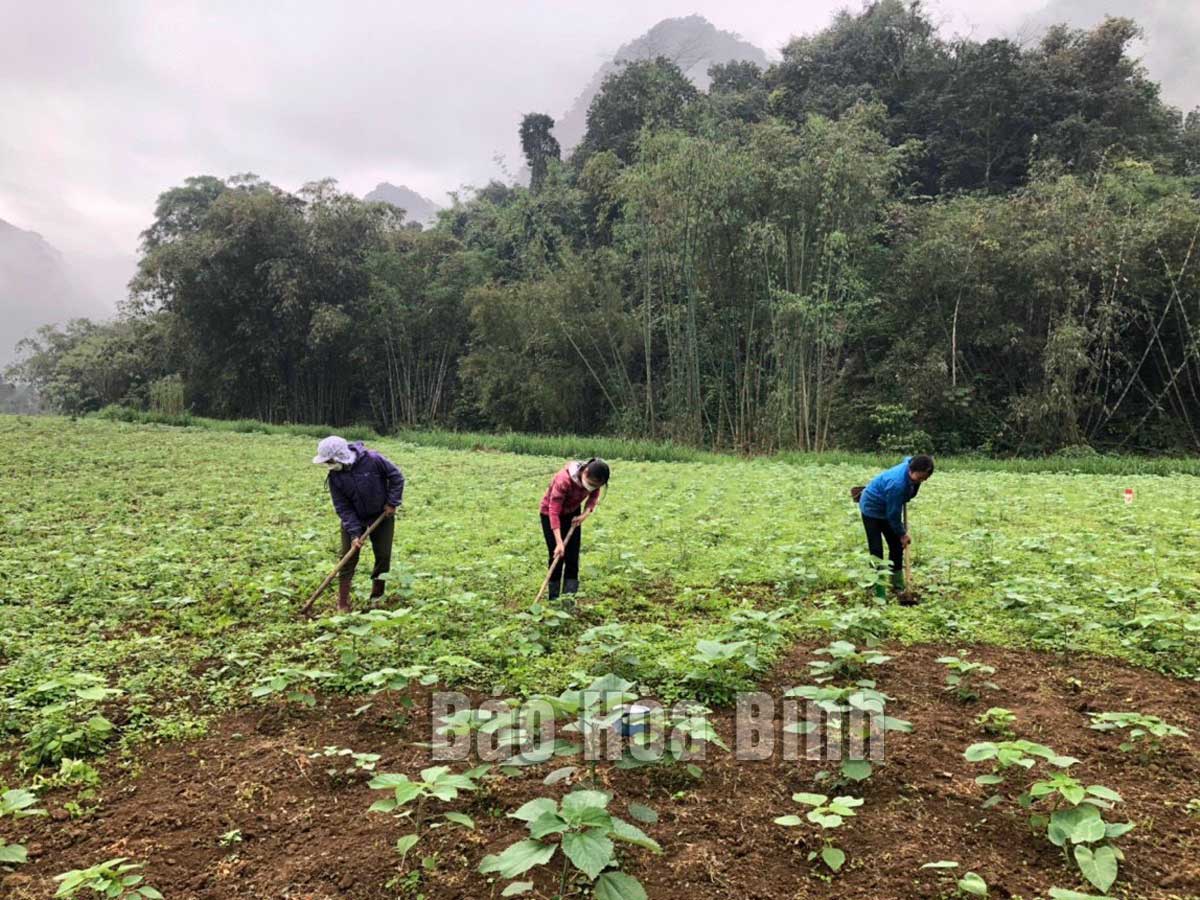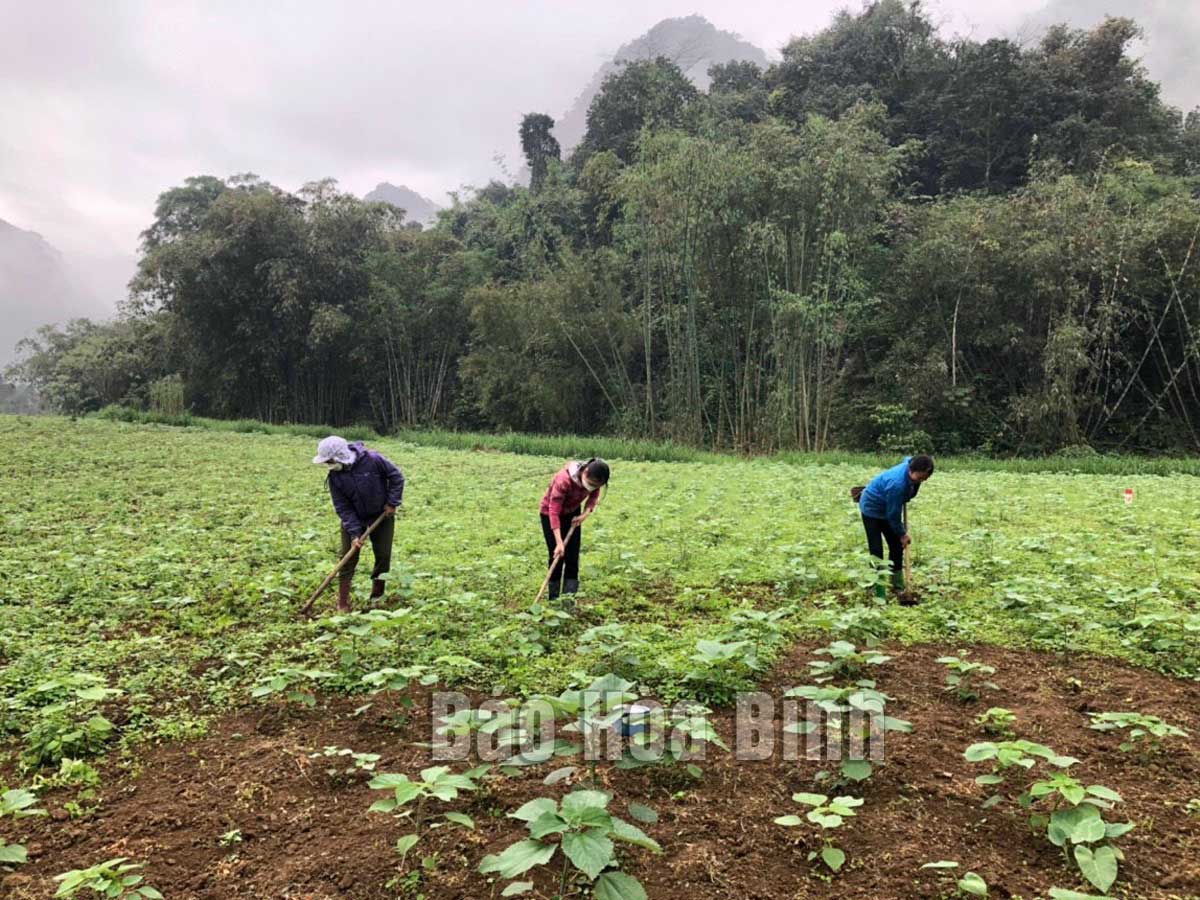
(HBO) – The Hoa Binh Department of Agriculture and Rural Development in collaboration with the An Phuoc Agricultural JSC began a trial planting of ramie (scientific name: Boehmeria Nivea) in some localities in the province in January 2021. After nearly two years, the plant has grown well on the local soil, bringing about incomes for growers.

Farmers in Chieng Chau commune, Mai Chau district, take care of ramie plants.
The main product of ramie, a quite familiar plant in Vietnam, is fiber, which can be used to weave raw fabrics or make ropes and fishing nets. However, it was not until 2021 that the plant was planted in large areas across districts in Hoa Binh.
As of October this year, the total area of ramie in the province neared 260 ha, mainly in upland districts and Hoa Binh city, with 435 households participating in the planting. Da Bac district has the largest plantation of 107 ha, followed by Mai Chau district with 72 ha.
As one of the first to join the trial planting in Bua hamlet, Trung Thanh commune, Da Bac, Luong Van Toan said the plant is relatively easy to cultivate, grows well and quickly for harvest if properly fertilised.
According to the leader of the provincial sub-department of cultivation and plant protection, the average yield of each crop is between 750 and 900 kg of dried bark per ha, creating an income of some 120 - 145 million VND (5,049 – 6,101 USD) per ha on an annual basis. However, this is not the maximum productivity of the plant; higher yields are expected in better cultivation conditions.
An Phuoc plans to expand the current ramie plantation to 300 hectares in 2023.
Many households growing the plant said that the initial investment cost is quite high, at about 40 million VND per ha. For sustainable and long-term growth, it is necessary to have a bark processing facility in the area and a commitment from enterprises involved to ensure long-term planting areas, they said.
Echoing the view, Nguyen Duc Bien, Vice Chairman of the provincial Farmers' Association, said that before scaling up and mass planting, it is necessary to conduct research and carefully evaluate the economic efficiency of the plant./.
In Hoa Binh province, 11 traditional craft villages with more than 400 small-scaled production households have put in place a clean and green production model, establishing new standards for sustainable development. Waste collection sites and wastewater treatment facilities have been meticulously managed by local residents.
To make it easier for the residents to handle administrative procedures, Yen Bong Commune (Lac Thuy District) has identified the administrative reform as one of its key tasks. By implementing a range of synchronized solutions, the commune has seen the positive changes in the administrative reform, meeting the needs of its people.
Mai Chau district has firmly established itself as a standout destination on Vietnam’s tourism map, attracting both domestic and international visitors with its breathtaking landscapes, rich ethnic culture, and warm hospitality. However, beyond its natural and cultural charm, a secure and well-managed tourism environment has added to Mai Chau’s appeal.
As Vietnam enters a new phase of economic and administrative reform in 2025, Hoa Binh province is stepping up its efforts to streamline governance, boost economic growth, and attract investment.
The Hoa Binh provincial People's Committee held its monthly meeting on March 26 to review the progress of key projects, assess budget revenue and public investment disbursement, provide feedback on draft documents for submission to the provincial Party Committee's Standing Board, and discuss other important matters related to the committee's governance activities.
Playing a key role in Hoa Binh province’s economic development, Luong Son district has been focusing on science and technology development, innovation, and digital transformation.



